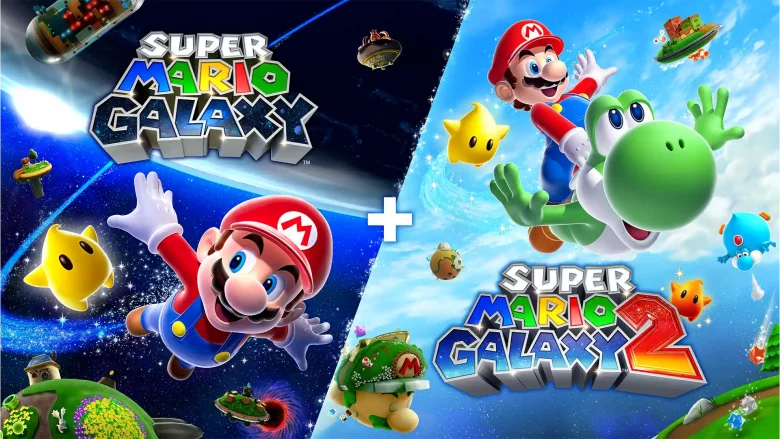Back in the early days of the Nintendo Wii, when people weren’t bowling against their granny they were playing Super Mario Galaxy. Although it didn’t launch with the console itself (we had Twilight Princess fill that role instead) Super Mario Galaxy released to rave reviews a year after launch and it was obvious that pretty much everyone loved it.
As a lifelong Mario fan who basically worshipped the ground the plumber jumped on though, I was a little disappointed. As I closed in on adulthood I was gorging on more competitive gaming experiences like Halo 3 ranked multiplayer, and this was the first Mario game that just felt too slow and dare I say too easy. My Nintendo loving heart never stopped pumping though, and I adored Super Mario Galaxy 2 a few years later. When I heard I’d get to replay both of these games now that I’m older and wiser I got pretty excited, and it turns out it was for good reason.
If Super Mario Galaxy + Super Mario Galaxy 2 is your first time heading into the stars with Mario and friends then you’re in for a treat. Of course Bowser is being a kidnapping jerk as usual, but this time there are talking chubby stars and their mysterious mommy Rosalina joining the cast. Yes she’s essentially just Princess Peach in a different dress and with slightly emo hair, but the internet loves her so we must as well. The real hook of the Galaxy games though is the interstellar setting, and the effect this has on the platforming.
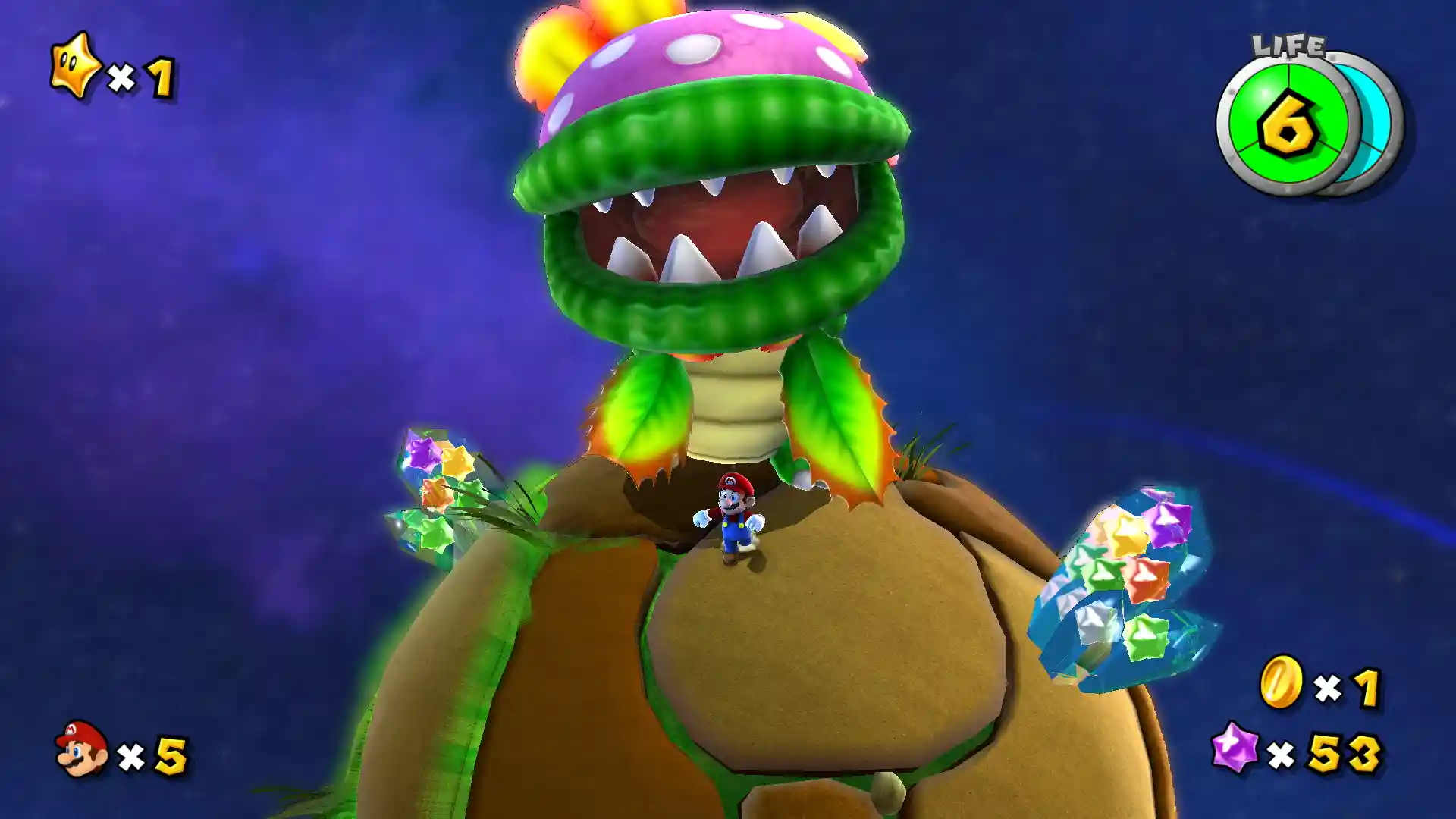
If you’ve seen so much as a clip of Super Mario Galaxy before, you’ll probably have noticed Mario walking upside down on a planet or two. That’s because in space gravity pulls you in all sorts of directions, making each platforming stage a new topsy turvy adventure. Back in 2007 this was ground-breaking and breath-taking, and even now it’s still pretty damn cool.
Unlike Super Mario 64 and Sunshine before it, Super Mario Galaxy has a load of individual stages (or galaxies) to make your way through as opposed to massive worlds to explore. It’s a big structural change, which means somewhat more linear platforming but a whole lot more variety. You’ll still find a couple of different stars (including some hidden ones) in each galaxy, but you won’t spend hours and hours exploring here. This means the focus is more on gravity defying obstacle courses, and ensures a whole heap of variety.
A lot of this variety comes from different power-ups, of which there are a host of creative options across the two games. Bee Mario is incredibly iconic and fun to buzz around as, but there’s also a cloud power up that allows you to make your own platforms, a spring that allows maximum bouncing, and even the ability to turn into a Boo and float through solid objects. Using new powers to make your way through exciting new environments is absolute blast, and filled me with childhood joy all over again in this remaster.
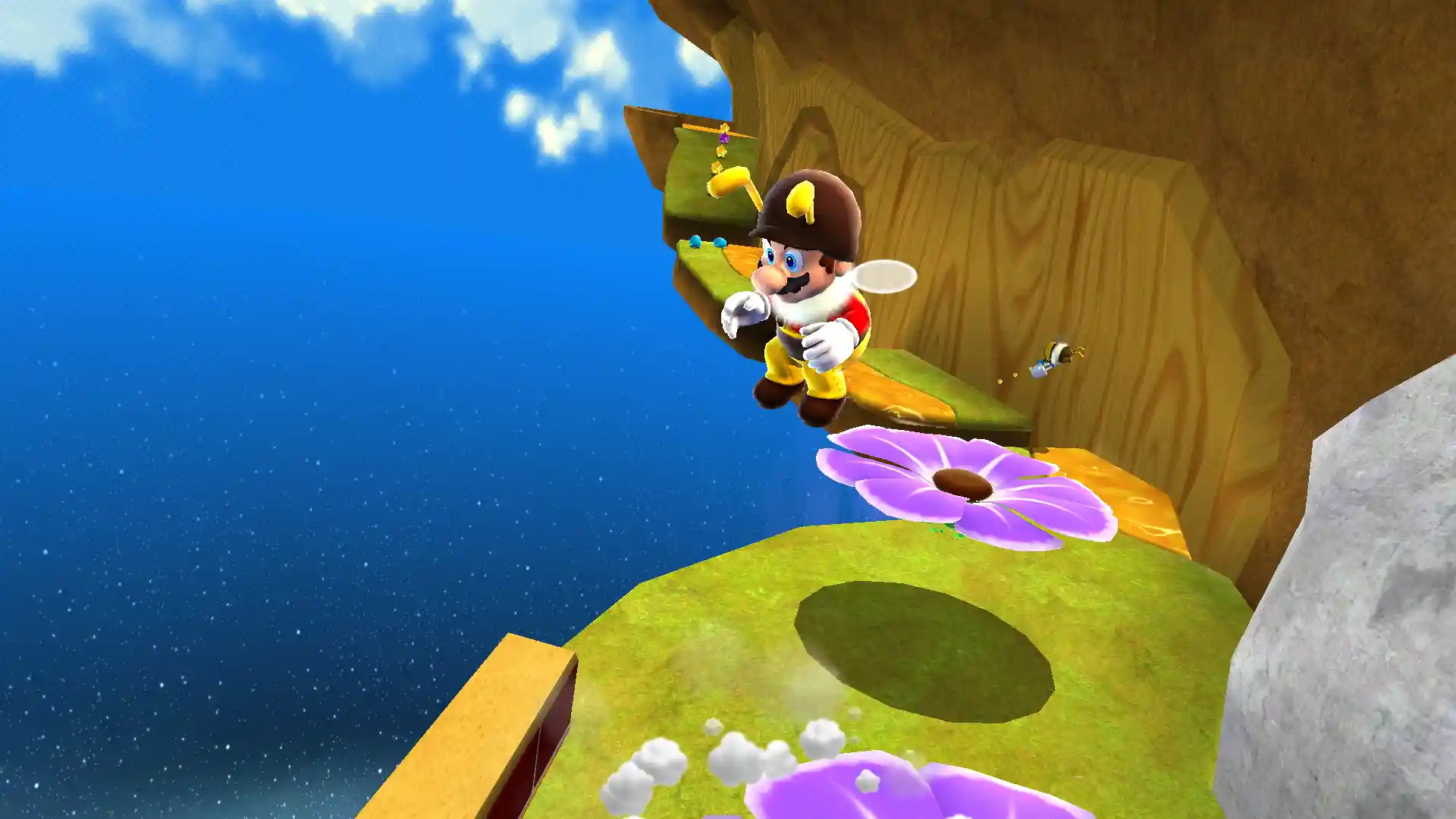
More than anything else, it’s the different galaxies that really make the Mario Galaxy games special. From worlds made up of fire and ice to factories that create Chain Chomps, every set of planets you hop between provides something exciting to indulge in. This is even more true when you take into account the more motion control focused stages that make up a hefty chunk of the game, but your appreciation of these will likely vary based on your taste for waggling.
Due to originally releasing on the Nintendo Wii, Super Mario Galaxy + Super Mario Galaxy 2 were originally played with a Wii Remote and Nunchuk. This meant you’d point at your TV screen and use a cursor to collect star bits throughout stages, and to interact with various elements of the stage. On the Switch 2 this can be replicated with the Joy-Cons when playing docked or detaching them from the console and pulling out the stand in handheld mode, but if you want to play portably you’ll have to make some compromises.
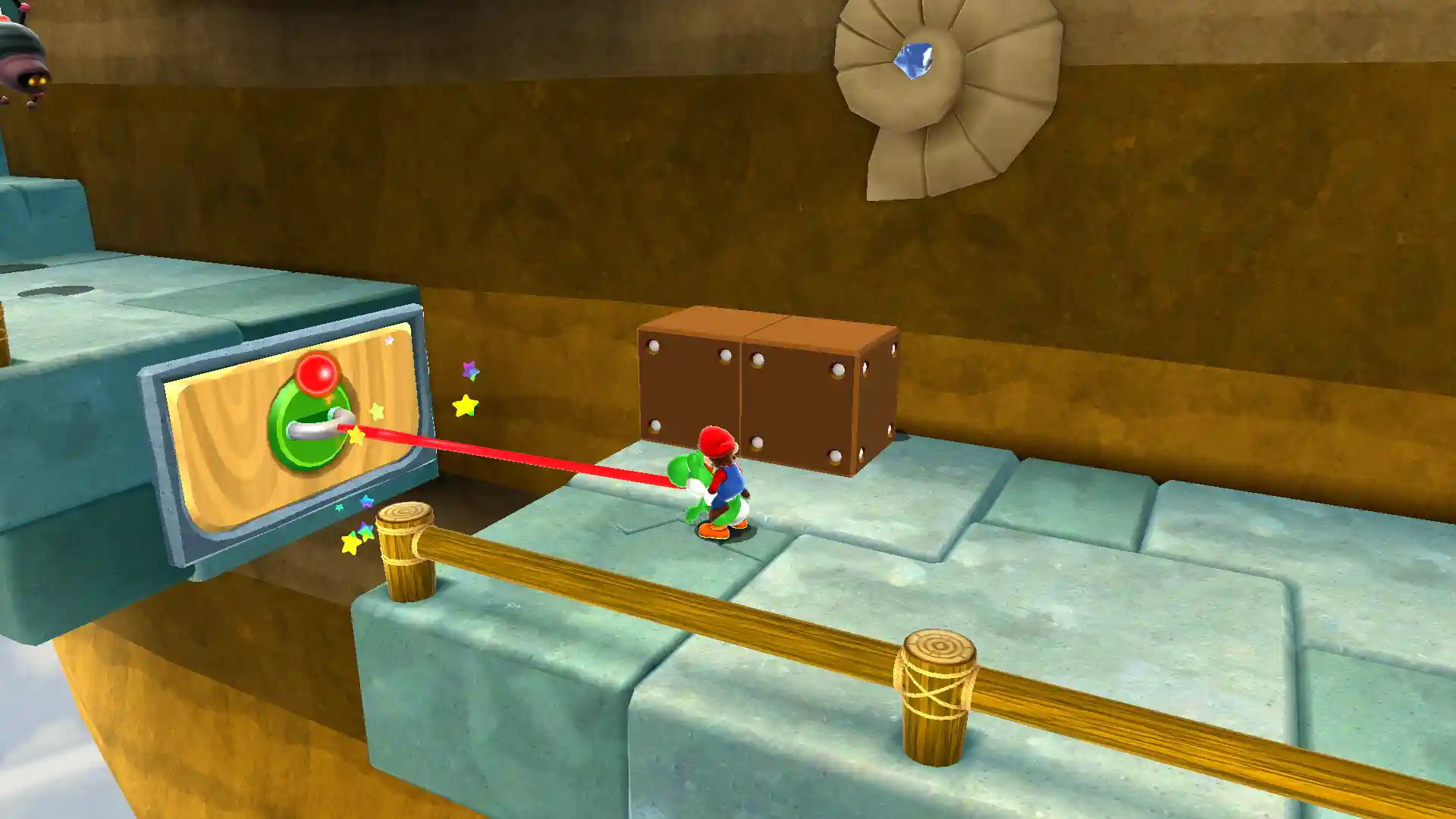
When playing in true handheld mode you can summon the cursor with the R button, and then tilt the entire console to move it around. This takes some getting used to but works fine at least for less fiddly tasks like collecting the spiky bouncing currency. You can also just touch the screen as a replacement for the pointer, but this means letting go of one jot on and losing some control of Mario. All in all it’s workable (if not ideal) and by switching between methods I was able to play through the entirety of the Galaxy duology without any docking.
Going back to the original Super Mario Galaxy after over a decade was rather delightful, but some of my original issues still stood out. Early galaxies are a little bit basic, but worse than that is the pacing between these stages. Constantly going back and forth around a bland and empty hub area feels rather brutal by modern standards, and constantly being bothered by Toads, Lumas and Rosalina only makes this worse. This issue does calm down as you progress at least, and in Super Mario Galaxy 2 it’s much more manageable.
Although I had fun playing Super Mario Galaxy, it was Super Mario Galaxy 2 that really blew me away in this collection of classics. The difficulty level is just that perfect nudge harder since it expects you’ve played the first game already, the hub world is (mostly) replaced with a delightfully efficient space map full of stages, and it even adds Yoshi. Whereas I was happy just seeing the credits in the first Galaxy , the sequel is going to stay on my Switch 2 until I’ve gathered every collectible possible.
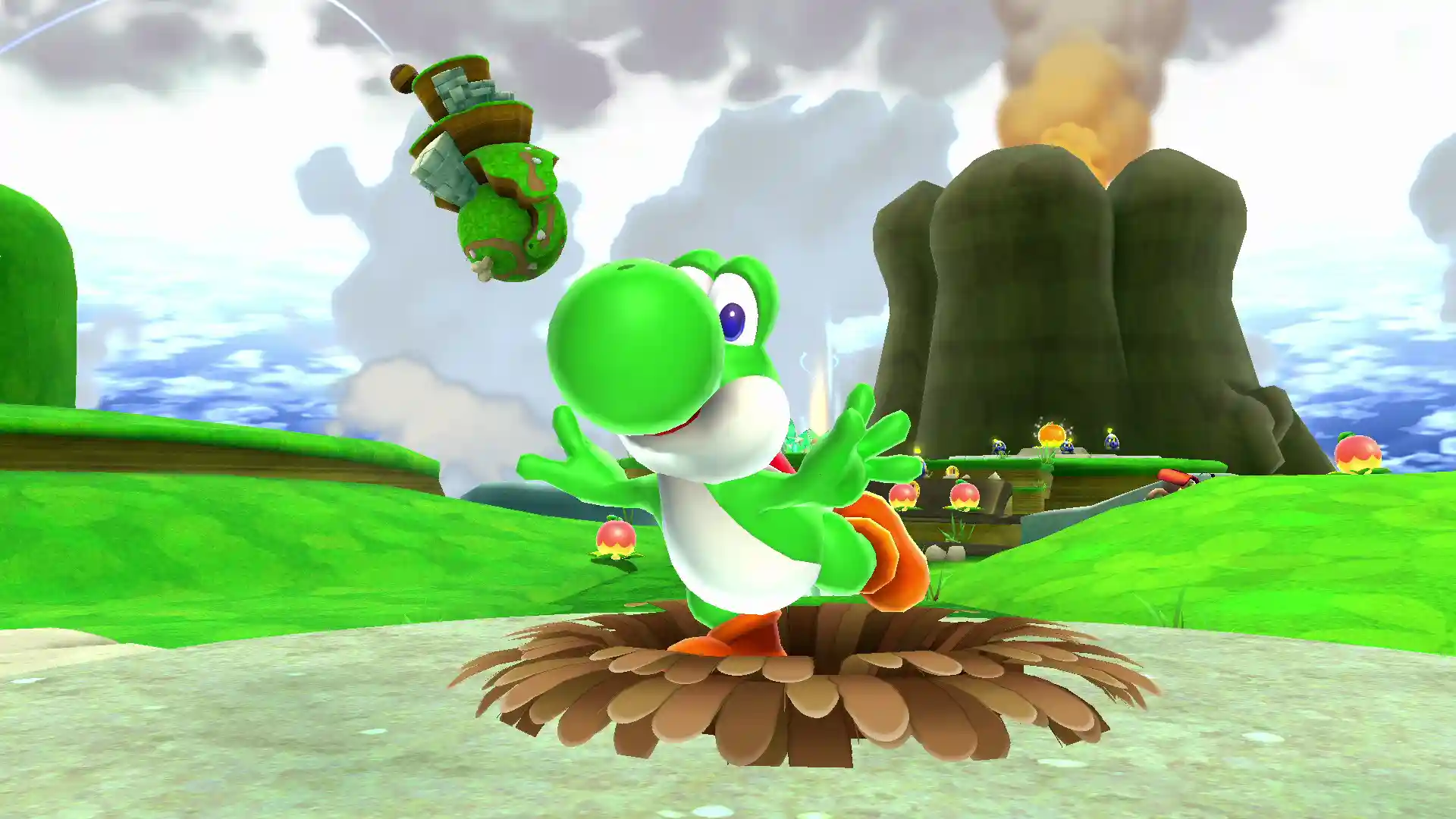
It’s worth mentioning that Super Mario Galaxy + Super Mario Galaxy 2 does more than just take two great games and make them available on a modern console, it also seriously improves how they look. No longer does this eighteen year old game look like a relic of the past, and instead it features crisp and vibrant visuals not far removed from Super Mario Odyssey. I wasn’t expecting quite so significant an upgrade, and it was yet another lovely surprise.
Super Mario Galaxy + Super Mario Galaxy 2 ensures that younger generations won’t miss out on the classic Mario games of yesteryear, and adds a whole lot of polish to them on top of that. The motion controls won’t be to everyone’s taste (and are more of an issue if playing handheld) but the creativity and variety of the galaxies absolutely makes up for this.
